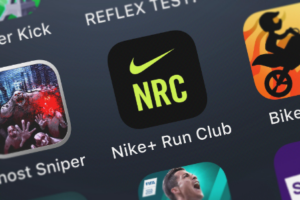Just D2C it: How Nike is leading the way with its digital strategy
While e-commerce continues to grow exponentially, becoming a familiar part of everyone’s daily life, it’s not just retailers and grocery stores that are getting in on the action. Savvy manufacturers are now also investing heavily in end-user engagement, upgrading and enhancing their digital strategies to open up new direct-to-customer (D2C) channels that can run alongside more traditional routes to market. This is not only a means to boost sales, it also offers great opportunities to create stronger and lasting relationships with customers.
Look no further than sports retail giant Nike, which is changing the game through its innovative digital sales strategy. Nike took an interesting step in 2016 in hiring its first Chief Digital Officer, and then the following year it launched an initiative called the Consumer Direct Offense. This was the triple-double strategy: “2X innovation, 2X speed and 2X direct connections with consumers.” Nike’s CEO at the time, Mike Parker, said: “through the Consumer Direct Offense we’re getting even more aggressive in the digital marketplace, targeting key markets and delivering products faster than ever.”
Nike creatively revised its sales strategy to primarily focus on its digital channels and target narrower segments, to use data to improve recommendations and product design, to integrate online and offline experiences, and to deliver an exceptional end-user experience.
Nike’s mobile apps have fuelled sales growth during the pandemic as part of the brand’s effort to boost D2C sales. Its digital business has more than doubled compared to 2019, growing to over $10 billion, despite still opening new stores in 2021.
“Digital is the ‘new normal’ in consumer behaviour, and we believe the trends that we’re seeing are here to stay,” said John Donahoe, president and CEO of Nike, in an address to investors. “Consumers want to get what they want, when they want it, how they want it.”
While many retail brands have worked towards unifying the shopping experience and consolidating all their products/services into one app, Nike has centred its app strategy around building a handful of apps to serve niche audiences.
The Nike app covers its full collection with a mix of content and personalisation features. Users can gain early access to products and chat with Nike specialists for style advice.
The SNKRS app is designed as a hub for ‘sneakerheads’ and ardent enthusiasts. It offers interactive features to boost engagement such as letting users participate in drawings for limited-edition sneaker drops and then share their collection with others in the ‘community’.
Other than its dedicated shopping apps, Nike’s exercise apps also feature mini shopping sections to reach people particular about their workouts and having the necessary gear.
The Nike Run Club app helps guide runs with an in-app coach to encourage and advise, along with features like a GPS tracker to measure running metrics.
The Nike Training Club app offers video workouts and tips on nutrition and wellness, illustrating how relevant content reinforces the Nike brand as a dependable source of inspiration for setting fitness goals and achieving them.
In an effort to grow offline sales, Nike has integrated its app strategy into its stores as well. For Nike+ members, entering a Nike store with the Nike app unlocks a new experience. With the app in in-store mode, customers can request fitting rooms and shoe sizes instantly, receive special offers and exclusive products, and skip the line by checking out via the app.
The apps encourage user participation, adopting a ‘gamification’ strategy designed to maintain loyalty, reinforce brand messaging and drive sales whilst helping the brand to gather data on consumer purchasing habits, personal information and exercise routines to shape future marketing initiatives.
Digital experiences have begun to complement and even substitute the in-store experience that had been a key part of Nike’s brand evolution through the years. With fewer people visiting stores, digital sales strategies have now overtaken the brand’s in-store efforts.
Of course, Nike has always been a leader in its field, but it’s still a great example for other brands to follow. Key to its success is putting the end-user experience at the heart of all decisions. In today’s world, that means thinking digital-first, whether in relation to shopping, community or lifestyle.
An app is more than just a digital channel, it is a portal that communicates the voice of a brand whilst listening to its users, and this all contributes towards building a ‘loyal’ community of users.
If you are working towards the next big idea in D2C retail, or have already started out in the space and want to understand how to take it to the next level, then Vidatec can help.
Get in touch with one of our experts to set up a design and discovery workshop today.